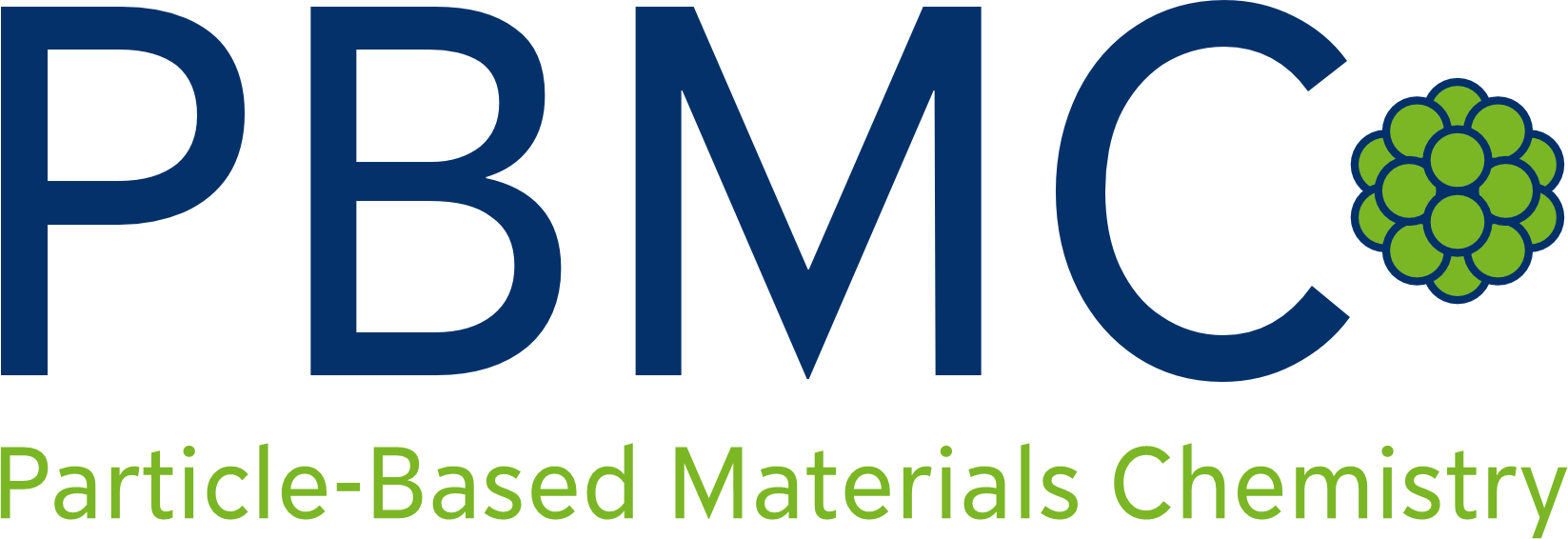Index
Marion Retter
Chair of Particle-Based Materials Chemistry (PBMC)
Marion Retter
Marion Retter studied chemistry and worked at the Fraunhofer Institute for Silicate Research ISC in Würzburg until 2019. She is now supporting the chair as an administrative assistant.
Romain Conan
Chair of Particle-Based Materials Chemistry (PBMC)
Romain Conan
Romain Conan completed his studies at the Institut National des Sciences Appliquées and Paul Sabatier University, Toulouse, France, with an Engineering Diploma of physics and a Master of Science degree in Nanosciences.
He started his PhD at the end of 2024 in a co-tutelle project with Charles University, Prague, Czechia. For this project, he will focus on elucidating the complex phenomena present in supraparticle assemblies using different types, shapes and sizes of monodisperse nanoparticles to simulate polydisperse systems.
Jakob Endres
Chair of Particle-Based Materials Chemistry (PBMC)
Jakob Endres
Jakob Endres completed his studies at the University of Würzburg with a Master of Science degree in Functional Materials. During his studies, he focused on investigating smart materials and novel spectroscopic methods relevant for energy technology and sustainability. His master’s thesis concentrated on micron sized particles based on nanoparticulate building blocks for hydrogen indication. Throughout his studies, he gained experience in scientific research at the department of physical chemistry at the University of Würzburg and the particle technology at Fraunhofer ISC.
He started his PhD at the end of 2024 with research at Fraunhofer R&D Center for Electromobility Bavaria with focus on particulate magnetic additives for lithium-ion batteries to improve the lifecycle of battery cells.
Markus Heinlein
Chair of Particle-Based Materials Chemistry (PBMC)
Markus Heinlein
Markus Heinlein completed his Master of Science degree in Chemistry at the Friedrich-Alexander-University Erlangen-Nürnberg in 2024. During his Master’s studies in the group of Prof. Mandel he focused on relation of magnetic interactions within and between supraparticles.
Continuing with his research in the Mandel group he started his PhD thesis in 2024, he will contribute to our efforts within the ERC consolidator grant SMART RUST to create perceptual matter.
Publications:
2025
- , , , , , , , :
Hybrid supraparticles for combined MPI and magnetic hyperthermia
In: International Journal of Magnetic Particle Imaging 11 (2025), Article No.: 2503034
ISSN: 2365-9033
DOI: 10.18416/IJMPI.2025.2503034 - , , , , :
Bulk Magnetic Properties Arise from Micron‐Sized Supraparticle Interactions and Can be Modified on the Nanoscale
In: Small (2025)
ISSN: 1613-6829
DOI: 10.1002/smll.202412311
Tero Kämäräinen
Chair of Particle-Based Materials Chemistry (PBMC)
Dr. Tero Kämäräinen
Tero Kämäräinen obtained his M.Sc. in Micro- and Nanotechnology in 2014 and D.Sc. in Bioproduct Technology in 2020 from Aalto University in Finland, during which he conducted work related to bio-based (nano)materials. In 2021, he started postdoctoral work at the Osaka Medical and Pharmaceutical University in Japan, where his main focus was on protein nanofibril-infused supraparticles and small-angle scattering structure analysis. He joined the Mandel group in May 2024 to work on stimuli-responsive supraparticles and magnetic particle spectroscopy.
Publications:
2025
- , , , , :
Role of Amyloid Nanofibrils in Drug Incorporation and Release from Wrinkled Supraparticles
In: ACS Applied Nano Materials (2025)
ISSN: 2574-0970
DOI: 10.1021/acsanm.5c02143 - , , , , , , , , , , , , , , , , , :
Sustainable green synthesis of CoFe2O4/TiO2 magnetic nanocomposites using Parkia speciosa (stinky bean) peel extract as an electrocatalyst for hydrogen production
In: Vacuum 239 (2025), p. 114378
ISSN: 0042-207X
DOI: 10.1016/j.vacuum.2025.114378
2024
- , , , , :
Building respirable powder architectures: utilizing polysaccharides for precise control of particle morphology for enhanced pulmonary drug delivery
In: Expert Opinion on Drug Delivery (2024)
ISSN: 1742-5247
DOI: 10.1080/17425247.2024.2376702 - , , , , :
Amyloid Nanofibril-Assisted Spray Drying of Crumpled Supraparticles
In: Small (2024)
ISSN: 1613-6829
DOI: 10.1002/smll.202309645 - , , , , , , :
Multiscale structure analysis of a pH-responsive gelatin/hydroxypropyl methylcellulose phthalate blend using small-angle scattering
In: Journal of Colloid and Interface Science 669 (2024), p. 975-983
ISSN: 0021-9797
DOI: 10.1016/j.jcis.2024.05.038 - , , , , , , , , , :
Cocrystal formulation design of 4-Aminosalicylic acid and isoniazid via spray-drying based on a ternary phase diagram toward simultaneous pulmonary delivery
In: Powder Technology (2024), p. 120126
ISSN: 0032-5910
DOI: 10.1016/j.powtec.2024.120126 - , , , , , , , , :
Tailored Sugar-Mediated Porous Particle Structures for Improved Dispersion of Drug Nanoparticles in Spray-Freeze-Drying
In: Langmuir (2024)
ISSN: 0743-7463
DOI: 10.1021/acs.langmuir.4c01165 - , , , , , , , , :
Nanoparticle Clustering in Supraparticles to Control Magnetic Long-Range Interactions
In: Particle & Particle Systems Characterization (2024), Article No.: 2400180
ISSN: 0934-0866
DOI: 10.1002/ppsc.202400180
2023
- , , , , , , , , :
Unveiling the flavone-solubilizing effects of α-glucosyl rutin and hesperidin: probing structural differences through NMR and SAXS analyses
In: Food and Function 14 (2023), p. 10493-10505
ISSN: 2042-6496
DOI: 10.1039/d3fo03261b - , , , , :
Tailoring the Self-Assembly of Steviol Glycoside Nanocarriers with Steroidal Amphiphiles
In: ACS Biomaterials Science and Engineering 9 (2023), p. 5747-5760
ISSN: 2373-9878
DOI: 10.1021/acsbiomaterials.3c01264 - , , , , , , :
Tuning the Phytoglycogen Size and Aggregate Structure with Solvent Quality: Influence of Water-Ethanol Mixtures Revealed by X-ray and Light Scattering Techniques
In: Biomacromolecules 24 (2023), p. 225-237
ISSN: 1525-7797
DOI: 10.1021/acs.biomac.2c01093
2022
- , , , , :
Machine learning as a tool to engineer microstructures: Morphological prediction of tannin-based colloids using Bayesian surrogate models
In: Mrs Bulletin 47 (2022), p. 29-37
ISSN: 0883-7694
DOI: 10.1557/s43577-021-00183-4 - , , , , , :
Modulating the Pore Architecture of Ice-Templated Dextran Microparticles Using Molecular Weight and Concentration
In: Langmuir 38 (2022), p. 6741-6751
ISSN: 0743-7463
DOI: 10.1021/acs.langmuir.2c00721 - , , , , , , , , :
Nanocellulose Removes the Need for Chemical Crosslinking in Tannin-Based Rigid Foams and Enhances Their Strength and Fire Retardancy
In: ACS Sustainable Chemistry & Engineering 10 (2022), p. 10303-10310
ISSN: 2168-0485
DOI: 10.1021/acssuschemeng.2c02678
2021
- , , , , , , , , , :
Bicomponent Cellulose Fibrils and Minerals Afford Wicking Channels Stencil-Printed on Paper for Rapid and Reliable Fluidic Platforms
In: ACS Applied Polymer Materials 3 (2021), p. 5536-5546
ISSN: 2637-6105
DOI: 10.1021/acsapm.1c00856 - , , , , , , :
Deconstruction and Reassembly of Renewable Polymers and Biocolloids into Next Generation Structured Materials
In: Chemical Reviews 121 (2021), p. 14088-14188
ISSN: 0009-2665
DOI: 10.1021/acs.chemrev.0c01333
2020
- , , , , , , , , , :
Chirality from Cryo-Electron Tomograms of Nanocrystals Obtained by Lateral Disassembly and Surface Etching of Never-Dried Chitin
In: ACS nano 14 (2020), p. 6921-6930
ISSN: 1936-0851
DOI: 10.1021/acsnano.0c01327 - , , , , , :
Effect of particle surface corrugation on colloidal interactions
In: Journal of Colloid and Interface Science 579 (2020), p. 794-804
ISSN: 0021-9797
DOI: 10.1016/j.jcis.2020.06.082 - , , , , , , , :
Nanofibrillar networks enable universal assembly of superstructured particle constructs
In: Science Advances 6 (2020), Article No.: eaaz7328
ISSN: 2375-2548
DOI: 10.1126/sciadv.aaz7328
2019
- , , , , , :
Changes in milk fat globules and membrane lipids under the shear fields of microfiltration and centrifugation
In: Journal of Membrane Science 573 (2019), p. 218-225
ISSN: 0376-7388
DOI: 10.1016/j.memsci.2018.12.007 - , , , , , , , , , :
Asymmetrical coffee rings from cellulose nanocrystals and prospects in art and design
In: Cellulose 26 (2019), p. 491-506
ISSN: 0969-0239
DOI: 10.1007/s10570-018-2167-7 - , , , , , , :
Morphology-Controlled Synthesis of Colloidal Polyphenol Particles from Aqueous Solutions of Tannic Acid
In: ACS Sustainable Chemistry & Engineering 7 (2019), p. 16985-16990
ISSN: 2168-0485
DOI: 10.1021/acssuschemeng.9b02378 - , , , , , :
Tessellation of Chiral-Nematic Cellulose Nanocrystal Films by Microtemplating
In: Advanced Functional Materials 29 (2019), Article No.: 1808518
ISSN: 1616-301X
DOI: 10.1002/adfm.201808518
2018
- , , , , , , :
Harmonic analysis of surface instability patterns on colloidal particles
In: Soft Matter 14 (2018), p. 3387-3396
ISSN: 1744-683X
DOI: 10.1039/c8sm00383a - , , , , , , , :
Controlled biocide release from hierarchically-structured biogenic silica: surface chemistry to tune release rate and responsiveness
In: Scientific Reports 8 (2018), Article No.: 5555
ISSN: 2045-2322
DOI: 10.1038/s41598-018-23921-2
2017
- , , , , , :
Optical Properties of Self-Assembled Cellulose Nanocrystals Films Suspended at Planar–Symmetrical Interfaces
In: Small 13 (2017), Article No.: 1702084
ISSN: 1613-6829
DOI: 10.1002/smll.201702084
2016
- , , , , , , , :
UV-ozone patterning of micro-nano fibrillated cellulose (MNFC) with alkylsilane self-assembled monolayers
In: Cellulose 23 (2016), p. 1847-1857
ISSN: 0969-0239
DOI: 10.1007/s10570-016-0942-x
Valentin Müller
Chair of Particle-Based Materials Chemistry (PBMC)
Valentin Müller
Valentin Müller obtained his Master’s degree from FAU working with Prof. Karl Mandel, Dr. Susanne Winzheimer and Prof. Julien Bachmann on ALD-coated supraparticles with catalytic properties. He now expands this topic in his PhD thesis in a collaboration between the groups.
Publications:
Leoni Luthardt
Chair of Particle-Based Materials Chemistry (PBMC)
Leoni Luthardt
Leoni Luthardt completed her Master of Science in Chemistry at the Friedrich-Alexander-University Erlangen-Nürnberg in 2022. During her Master’s thesis in the Mandel group she worked on the design and characterization of luminescent temperature indicator supraparticles with a tunable two-step color change. In her PhD thesis starting in 2023, she will continue in Prof. Mandel’s group in the field of inductively heatable nanoparticles and their versatile applications. Special focus lies on implementing them in controlled design for dismantling scenarios, especially in lithium-ion battery architectures to improve their recycling strategies.
Publications:
2025
- , , , , , , , :
Magnetically “Programming” Cobalt-Doped Iron Oxide Nanoparticles for Localized Induction Heating: Triggering a Collective Effect of Magnetic Moment Alignment on Demand
In: Advanced Materials (2025), Article No.: e07158
ISSN: 0935-9648
DOI: 10.1002/adma.202507158
URL: https://advanced.onlinelibrary.wiley.com/doi/10.1002/adma.202507158
2024
- , , , , , , , , , , :
Reusable and inductively regenerable magnetic activated carbon for removal of organic micropollutants from secondary wastewater effluents
In: Water Research 255 (2024), p. 121525
ISSN: 0043-1354
DOI: 10.1016/j.watres.2024.121525 - , , , , :
Customizable Induction Heating Profiles: from Tailored Colloidally Stable Nanoparticles Toward Multi-Stage Heatable Supraparticles
In: Advanced Functional Materials (2024), Article No.: 2412296
ISSN: 1616-301X
DOI: 10.1002/adfm.202412296
URL: https://onlinelibrary.wiley.com/doi/10.1002/adfm.202412296 - , , , , , :
Modulating the Microenvironment of Coumarin Dyes within Multihierarchical Supraparticles: En Route toward Versatile Luminescent Dual-Threshold Temperature Indicators with Ratiometric Readout
In: Advanced Optical Materials 12 (2024), Article No.: 2303346
ISSN: 2195-1071
DOI: 10.1002/adom.202303346
2023
- , , , , , , , , , :
Multifunctional, Hybrid Materials Design via Spray-Drying: Much more than Just Drying
In: Advanced Materials 35 (2023), Article No.: 2306648
ISSN: 0935-9648
DOI: 10.1002/adma.202306648
URL: https://onlinelibrary.wiley.com/doi/full/10.1002/adma.202306648
Sara Li Deuso
Chair of Particle-Based Materials Chemistry (PBMC)
Sara Li Deuso
Sara Li Deuso completed her Master of Science degree in Chemistry at the Friedrich-Alexander-University Erlangen-Nürnberg in 2022. During her Master’s studies in the group of Prof. Mandel she focused on the synthesis of code-carrying magnetic supraparticles, aiming to utilize them for marking battery materials.
Continuing with her research in the Mandel group she started her PhD thesis in 2022, focusing on particulate markers whose magnetic signal is read out using a sensitive and fast measuring technique – magnetic particle spectroscopy (MPS).
Publications:
2024
- , , , , , , , , :
Magnetic Supraparticles as Identifiers in Single-Layer Lithium-Ion Battery Pouch Cells
In: Chemsuschem (2024)
ISSN: 1864-5631
DOI: 10.1002/cssc.202401142 - , , , , , , , , , , :
Reusable and inductively regenerable magnetic activated carbon for removal of organic micropollutants from secondary wastewater effluents
In: Water Research 255 (2024), p. 121525
ISSN: 0043-1354
DOI: 10.1016/j.watres.2024.121525
Andreas Zink
Chair of Particle-Based Materials Chemistry (PBMC)
Andreas Zink
Andreas Zink graduated from Friedrich-Alexander University Erlangen-Nürnberg in 2022 with a Master of Science degree in chemistry. During his master studies he focused on monitoring the changes of the magnetic behavior of superparamagnetic iron oxide nanoparticles (SPIONs) via magnetic particle spectroscopy (MPS). Besides his studies he gained various experience in organic and inorganic chemistry as a research assistant.
In his PhD thesis he focuses on the assembly of organic and inorganic building blocks to supraparticles.
Publications:
2024
- , , , , , , , , , :
Mesoporous supraparticles with a tailored solid-liquid-gas interface for visual indication of H2 gas and NH3 vapours
In: Chemical Communications 60 (2024), p. 5840-5843
ISSN: 1359-7345
DOI: 10.1039/d4cc01247j
2023
- , , , , , , , , , :
Magnetic in situ determination of surface coordination motifs by utilizing the degree of particle agglomeration
In: Journal of Colloid and Interface Science (2023), p. 633-643
ISSN: 0021-9797
DOI: 10.1016/j.jcis.2023.05.182
2022
- , , , , , , :
Influence of substituents of Perylenebisimides on the surface energy and wettability: A systematic structure–property relationship analysis
In: Dyes and Pigments 199 (2022), p. 110044
ISSN: 0143-7208
DOI: 10.1016/j.dyepig.2021.110044
URL: https://www.sciencedirect.com/science/article/abs/pii/S0143720821009104?via=ihub
Magnetic entities and magnetic particle spectroscopy (MPS)
Research
Magnetic entities and magnetic particle spectroscopy (MPS)
![]()
Iron oxide-based nanoparticles can be engineered to be magnetically steerable, inductively heatable or chemically reactive. Joined to entites such as supraparticles, collective magnetic interaction occurs. Besides designing these magnetic interactions, we also study them via the method of magnetic particle spectroscopy (MPS) that we pioneer and consider as a very powerful tool that provides new eyes to study processes or materials when it is dark, i.e., when one cannot use (light) optical means.
Selected publications:
, Wolf A., ,
Information-providing magnetic supraparticles: particle designs to record environmental stimuli with readout by magnetic particle spectroscopy
In: Accounts of Materials Research (2025), just accepted
Wolf A., Heinlein M., Kent N., Müssig S.,
Bulk magnetic properties arise from micron-sized supraparticle interactions and can be modified on the nanoscale
In: Small (2025)
DOI: 10.1002/smll.202412311
Wolf A., Sauer J., Hurle K., Müssig S. and Mandel K.
Magnetic supraparticles capable of recording high temperature events
In: Advanced Funtional Materials (2024)
DOI: 10.1002/adfm.202316212
, Müssig S., Bauer H.,, Mandel K.
Recording Temperature with Magnetic Supraparticles
In: Advanced Materials (2022)
DOI: 10.1002/adma.202202683
, , , ,
A Single Magnetic Particle with Nearly Unlimited Encoding Options
In: Small (2021)
DOI: 10.1002/smll.202101588










